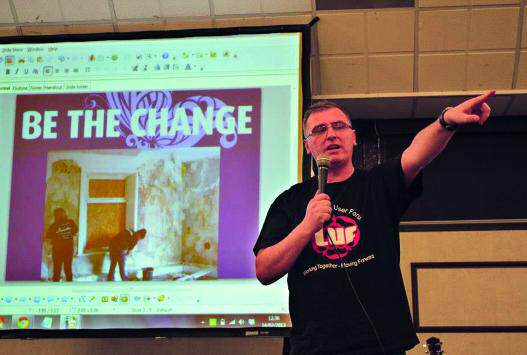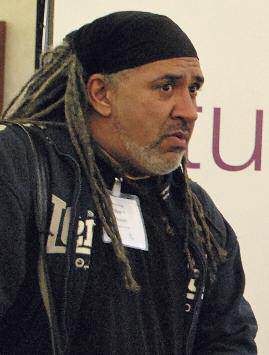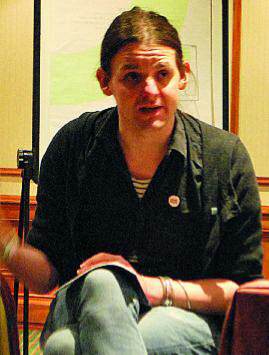Basic HTML Version














12 |
drinkanddrugsnews
| March 2013
Be the change |
Service user conference 2013
www.drinkanddrugsnews.com
contributors happen to be service users. It has everything in – they don’t tend to be
war stories.’
Had they considered just going online, asked one delegate. Brown responded that
print had created ‘a unity of tone’ and ‘a point for people to rally around’ – and in practical
terms meant that GPs could offer it to patients, saying ‘does any of this work for you?’
Perhaps most importantly, he said, it could bring you closer to other readers:
‘When you buy a magazine regularly it’s like joining a gang – “this is my magazine.”’
Nigel Brunsdon offered an online perspective, from his experience of contributing
to websites and social media for his employers, HIT, and running his own site
www.injectingadvice.com. Since the early days of Facebook and Twitter, he had
explored their full potential, both in his job and at home.
‘We know these things work,’ he said. The advice he offered to delegates was
around how to use them safely and effectively.
His dual approach to networking included people in his close circles, but also those
linked more remotely with the drug and alcohol field, to expand his knowledge. Going
online had the advantage of transcending time and distance, he said – a contact from
Canada had helped him update a crack pipe project; another in Australia had helped
with a late-night website problem.
While the design time for websites and social media could be the same as for
printed magazines, posting took just seconds, said Brunsdon and he offered some tips
for more effective engagement.
Use hashtags and make them as specific as possible, he advised. ‘And use
questions when posting on Facebook – they work better than statements. People will
engage and answer questions.’
Using YouTube on a website was a great way to attract traffic to it, particularly if
you tagged, described and categorised your film fully. ‘Allow people to embed videos
so you get plenty of hits,’ he said.
For Twitter, he advised delegates to ‘get your messages as small as possible so
people can retweet easily. You don’t have to follow people back – see if they engage. If
people abuse you, block them straightaway.’
‘Howwould you sell social media to an organisation that fears it?’ asked one delegate.
‘Sell it as a way to engage with user groups,’ suggested Brunsdon. ‘People are afraid
of it because they fear that someone will say something bad about their organisation.
But they already are, and they will – if you’re not there you have no voice.’ A concise
social media policy would help to give clear boundaries, he added.
‘Be careful what you type, as what you write reflects your organisation,’ he said.
Sites such as www.hoax-slayer.com could be useful in verifying suspect posts, he
advised, cautioning that ‘the share button is so easy to use’.
But armed with enough know-how to get started, social networking could offer a
wealth of resources and enjoyment, without impinging on real life.
‘Software helps you post at different times,’ he said. ‘If something’s interesting,
share it.’
*****
FORCE FOR CHANGE
A diverse and lively group attended the workshop on setting up a
successful service user group
‘Our organisation is here for people who aren’t yet members – it’s for people that don’t
know who we are yet,’ said Peter Yarwood from the Lancashire User Forum (LUF), a
thriving group whose members participated fully in the conference. Together with
Kevin Jaffray and Jez Francis from Bedfordshire user group Sussed and workshop chair
Neil Hunt, Yarwood went through the reality of setting up a group, emphasising the
passion and commitment needed to maintain it.
Francis took delegates step by step, from brainstorming ideas about the group, to
planning and organisation, with advice on essential practical issues such as finance
and policy, to options for volunteering and help with employment. ‘It’s very unlikely
that the difficulties you face are new,’ he said by way of encouragement.
Yarwood gave a case study of the demise and revival of LUF, recalling how it
inspired him four years ago as a service user. ‘We looked at our values and what we
wanted to achieve – we wanted to include everybody,’ he said. ‘We looked at service
user involvement and what was going wrong, then looked at what was going right
and built on that.’ The secret to growing the group had been in developing skills
together and building relationships.
‘Our organisation is here for
people who aren’t yet members
– it’s for people that don’t know
who we are yet’
PETER YARWOOD,
service user group workshop
‘The challenge is to get from the service
user experience something that works
for everyone else... Use the personal
experience as the fire that drives you.’
MARK BROWN,
communications workshop

